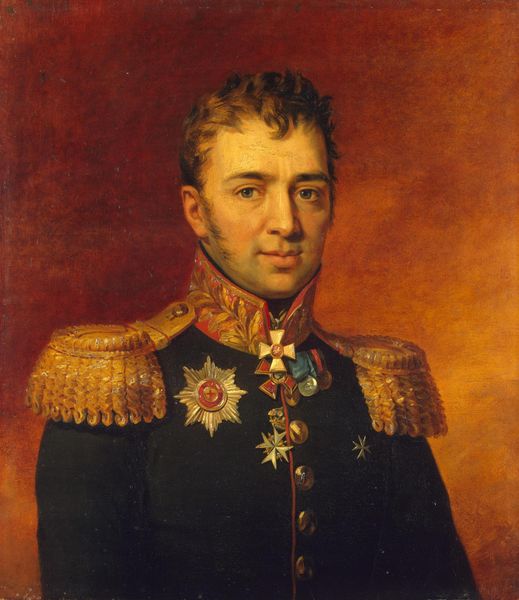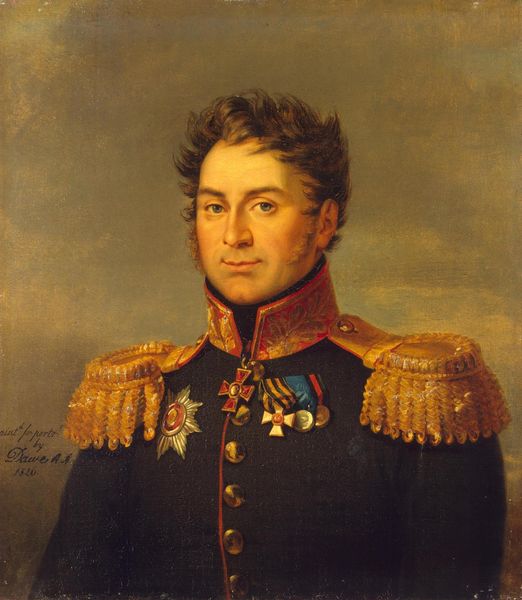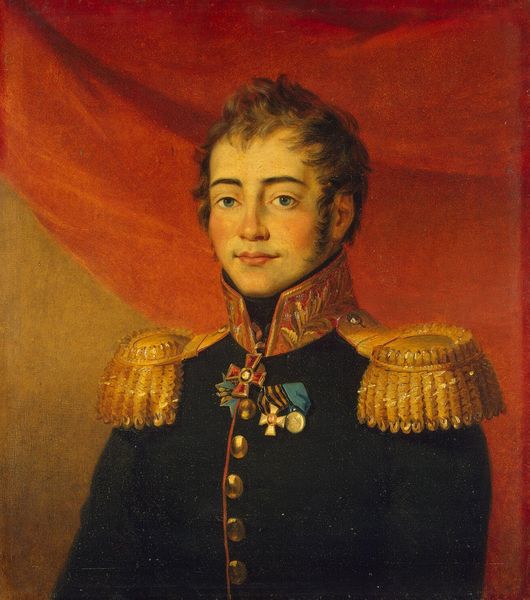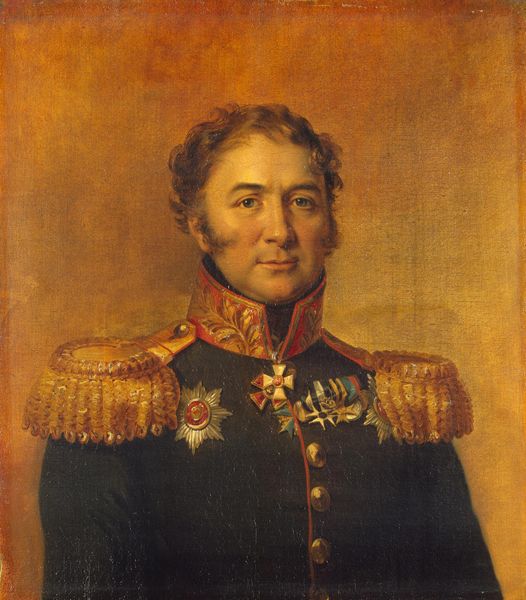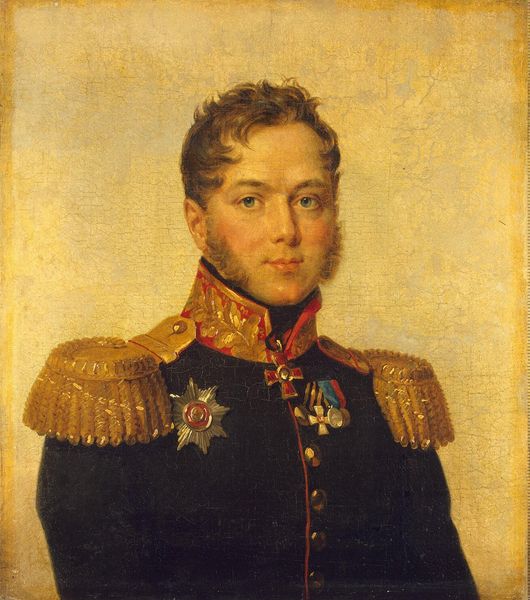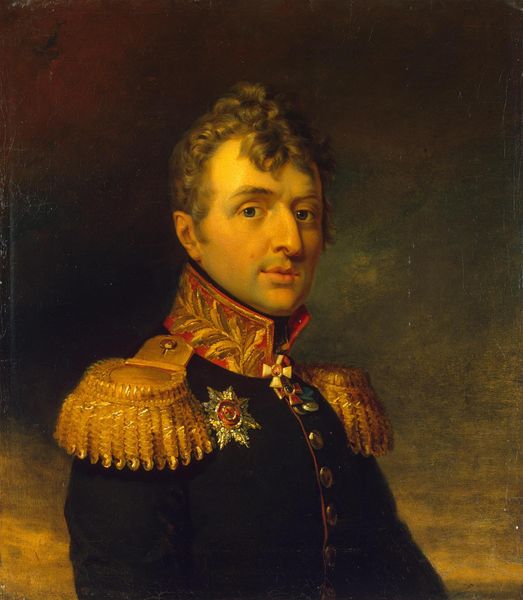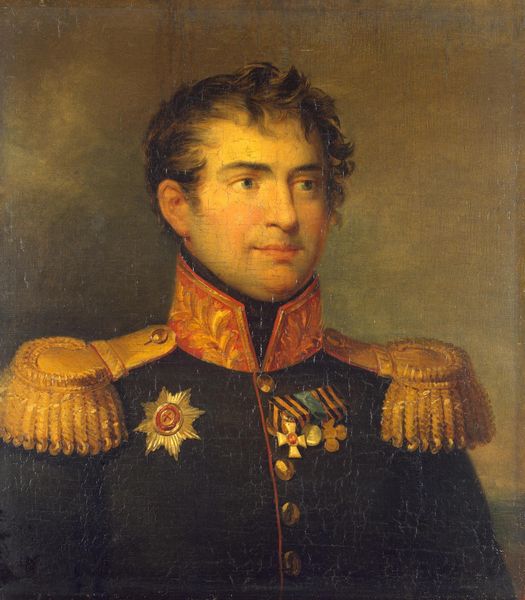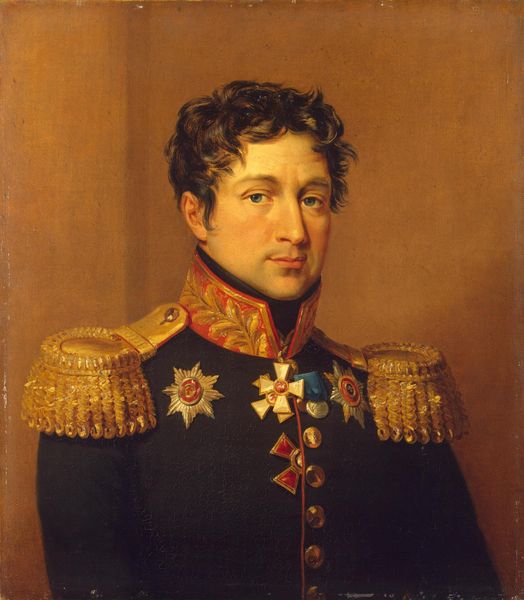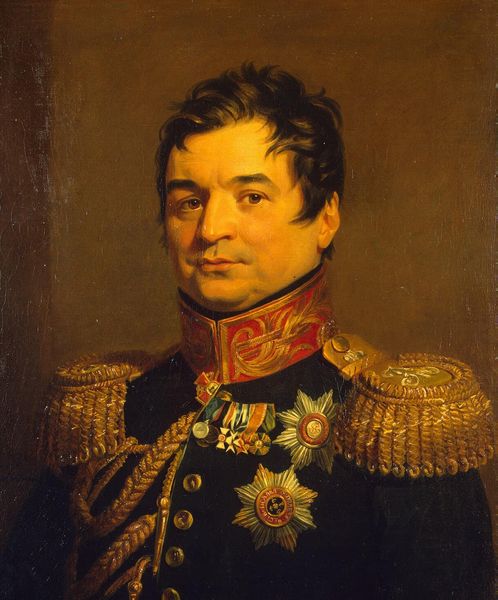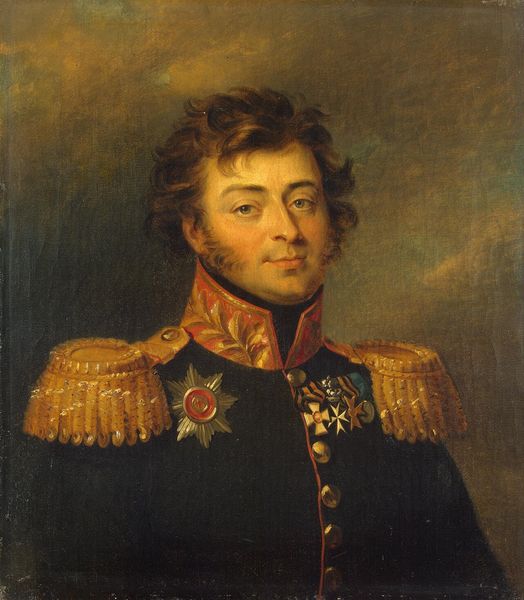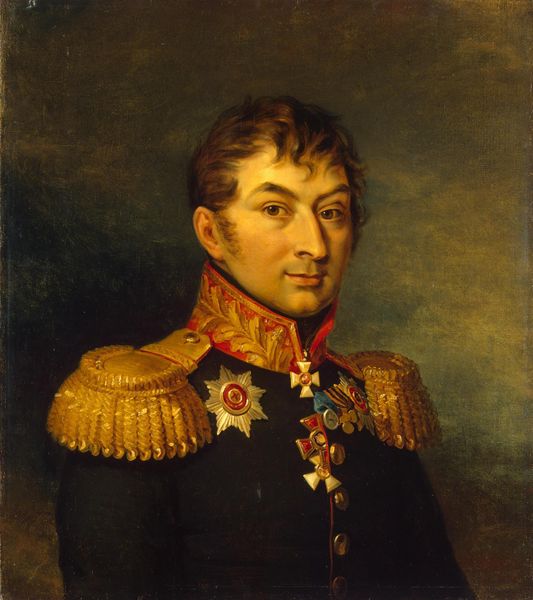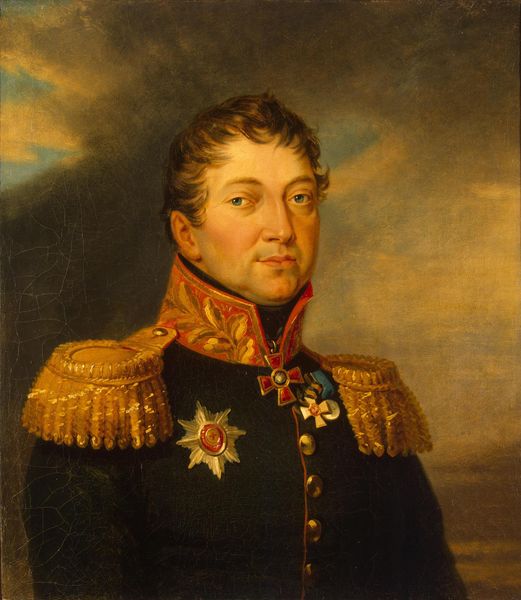
painting, oil-paint
#
portrait
#
painting
#
oil-paint
#
romanticism
#
history-painting
Copyright: Public domain
Curator: This is a portrait of Kirill Fyodorovich Kazachkovsky, a Russian general. It is attributed to George Dawe and can be found in the Hermitage Museum in Saint Petersburg. Editor: The first thing that strikes me is the sheer weight of his uniform – both literally and figuratively. The gold epaulettes and numerous medals suggest someone burdened by duty, and perhaps, even expectation. Curator: Absolutely. Dawe, an English painter, became highly sought-after by the Russian Imperial court following the Napoleonic Wars. He painted numerous portraits of Russian generals who played key roles in the defeat of Napoleon. It served a specific socio-political need, bolstering Russian national pride and legitimizing Tsarist power through imagery. Editor: It's fascinating how these portraits were tools of statecraft, visually constructing a narrative of Russian heroism and imperial dominance. Look at the way Kazachkovsky's gaze meets the viewer—it’s direct, confident, almost challenging. Yet, his facial expression hints at something more complex than mere bravado. Curator: Precisely. While these portraits aimed to glorify the sitters, they also reveal nuances of character, and, in their display, the complex nature of power itself. These paintings in the Winter Palace and other such public displays worked to cultivate public sentiments of national pride and loyalty. Editor: I agree. I’m curious about the choice of Romanticism as a style. It blends the idealization of the hero with an interest in genuine emotion. It feels contradictory and perhaps deliberate given Romanticism’s association with revolutions against autocratic rule and its tendency towards liberalism. This is also another tool of the Court, suggesting that a new, reformed Russia will take its place amongst modern European powers. Curator: Dawe had a studio in the Winter Palace. Following his death, many of his commissioned portraits formed the basis for the Military Gallery of the Winter Palace, further emphasizing their public role. Dawe, however, struggled greatly later in life, and the same government which lauded his work was ultimately forced to secure his assets against debt. Editor: That's a crucial point. Highlighting the intersection of art and political ambition can help us reflect on power’s potential pitfalls, and even what kind of work can be born of, and come to transcend, such difficult and morally ambivalent patronage. Curator: Looking at Kazachkovsky's portrait again, I am now drawn to those elements that suggest an individual story, captured amidst the grand narrative. Editor: I am interested in the artist himself now, beyond this one rendering. I would like to consider how to consider George Dawe in context with those who he represented. What might their relation be?
Comments
No comments
Be the first to comment and join the conversation on the ultimate creative platform.
